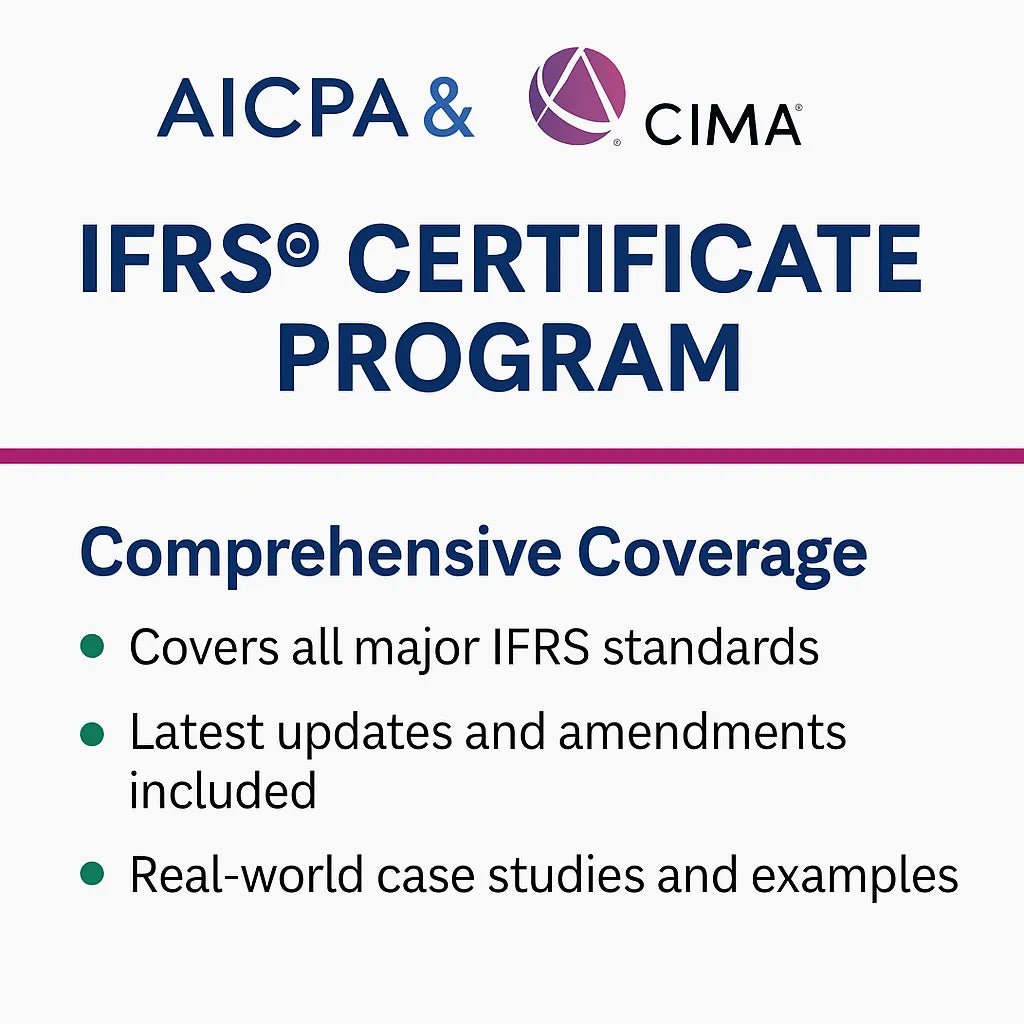FAQs
What is the full form of IFRS?
IFRS stands for International Financial Reporting Standards.
What is IFRS?
The mission of the IFRS Foundation and the International Accounting Standards Board (IASB) is to develop International Financial Reporting Standards (IFRS) that bring transparency, accountability and efficiency to financial markets around the world.
They seek to serve the public interest by fostering trust, growth and long-term stability in the global economy.
The motivation for the convergence of historically dissimilar financial reporting standards has been, in the main, to facilitate the free flow of capital so that, for example, investors in the US would become more willing to finance business in, say, China or the Czech Republic.
Access to financial statements which are written in the same "language" would help to eliminate a major impediment to induce investor confidence, sometimes referred to as "accounting risk," which adds to the more tangible risks of making such cross-border investments.
Additionally, permission to list a company's equity or debt securities on an exchange has generally been conditional on making filings with national regulatory authorities. These regulators tend to insist either on conformity with local Generally Accepted Accounting Practice (GAAP) or on a formal reconciliation to local GAAP.
These procedures are tedious and time-consuming, and the human resources and technical knowledge to carry them out are not always widely available, leading many would-be registrants to forgo the opportunity of broadening their investor bases and potentially lowering their costs of capital.
How many countries have adopted IFRS?
Over the last decade, the adoption of IFRS has grown tremendously. The international accounting standard-setting process has claimed several successes in achieving greater recognition and use of IFRS.
A significant breakthrough came in 2002 when the European Union (EU) adopted legislation that required listed companies in Europe to apply IFRS in their consolidated financial statements. The ruling came into effect in 2005 and immediately started getting adopted by more than 8,000 companies in 30 countries, including France, Germany, Italy, Spain, and the United Kingdom. The adoption of IFRS in Europe means that IFRS has replaced national accounting standards and requirements as the basis for preparing and presenting group financial statements for listed companies. This adoption is considered by many a significant milestone in the history of international accounting.
Outside Europe, many other countries also have been moving to IFRS. By 2005, IFRS had become mandatory in many countries in Africa, Asia, and Latin America. In addition, Brazil, Japan, Hong Kong, New Zealand, the Philippines, and Singapore have adopted national accounting standards that mirror IFRS. Australia adopted IFRS and also based its public sector reporting on IFRS.
Today, IFRS is being used in over 100 countries. A significant number of global Fortune 500 companies already use IFRS. This number will increase by 2023 with further conversions to IFRS by major international players (most notably Canada and India) and substantial convergence of local GAAPs in China and the US to IFRS.
What is the difference between GAAP and IFRS?
The FASB, which sets out the USGAAP and the IASB, which issues the IFRS, came into existence in the same year—1973. Their standards are also very similar insofar as they are both within the body of what is known as Anglo-Saxon accounting and have many common influences.
Both standard-setters use virtually the same conceptual framework, and they are currently revising their respective literature to have a single, common framework.
A generic issue between IFRS and U.S. GAAP is that American standards are written to include much more detail and many more specificities than IFRS. Companies that use IFRS tend, as a consequence, to rely on the support material prepared by academics and practitioners to provide practice information and make analogies
If one wants to truly understand the differences between GAAP and IFRS, the following two are the Conceptual fundamental differences between the accounting bodies FASB and IFRS.
1) Litigious environment
While IFRS and GAAP come from the Anglo-Saxon tradition, one thing sets the United States and GAAP apart from other Anglophone countries: the litigious environment of the United States.
By their very nature, IFRS must be written to work independently of any national legal system.
On the other hand, U.S. standards have been written for many years with detailed rules. When faced with a claim, these enable companies and their auditors to point to a rule book and say to a judge, “We followed the rules—so we have no case to answer.”
2) Rules-based vs Principle-based
FASB has a tradition of issuing very detailed, prescriptive (“rules-based”) standards that give bright-line accounting (and, consequently, audit) guidance, which are intended to make compliance control easier and remove uncertainties.
IFRS is more generic and requires professional judgment to apply to particular cases. In many cases, the company has to decide which standard applies in their circumstances, and subsequently, that judgment could be more easily challenged in the courts. IFRS are written at a more generic level and have very few industry-specific rules.
Top 10 differences in U.S. GAAP and IFRS
1) US GAAP does not permit revaluations of property, plant and equipment or mineral resources.
2. Internally generated intangible assets are not recognised under US GAAP, with the exception of some website development costs. The underlying reason is that these assets do not have objectively measurable values.
3.US GAAP does not separately define investment properties. Property held for investment purposes is treated the same as other property, plant and equipment.
4. US GAAP measures revenue based on the fair value of what is given up or the fair value of what is received, whichever is more evident. On the other hand, IFRS measures revenue based on the fair value of what is received or receivable. US GAAP includes specialised accounting for multiple-deliverable arrangements, which, in principle, are the same as IFRS but include clauses that delay recognition until the reliability of measurement complies with a concept called Vendor-Specific Objective Evidence.
5. US GAAP literature for revenue recognition for construction and production-type contracts contain much more guidance than IFRS. Separation and combination of contracts are different in some instances. The language in US GAAP for construction and production-type contracts are written in terms of options rather than prescription. However, in practice, the guidance is treated as mandatory. If certain criteria are met, the percentage-of-completion method is used in US GAAP. If not, the completed contract method is used.
6. US GAAP uses the enacted tax rate when accounting for deferred taxes.
7. Accounting for inventory under US GAAP is essentially the same except for inherent differences in the measurement of costs (i.e., fair value where applicable, capitalised interest where applicable). The last-in, first-out cost method (LIFO) is permitted under US GAAP. This costing method is used primarily by oil and gas companies to minimise taxable income. The U.S. Tax Code contains a concept called book-tax conformity that would prohibit deductions under LIFO if it is not the primary cost model.
8. In a business combination, US GAAP requires non-controlling interest (NCI) to be recorded at fair market value, whereas under IFRS, there is an option to record NCI at its proportionate interest in the net assets or at fair market value.
9. Push-down accounting is required in certain circumstances for public companies and optional for private companies under US GAAP. Push-down accounting is not allowable under IFRS.
10. Preference shares under US GAAP are presented in equity and not with liabilities.





